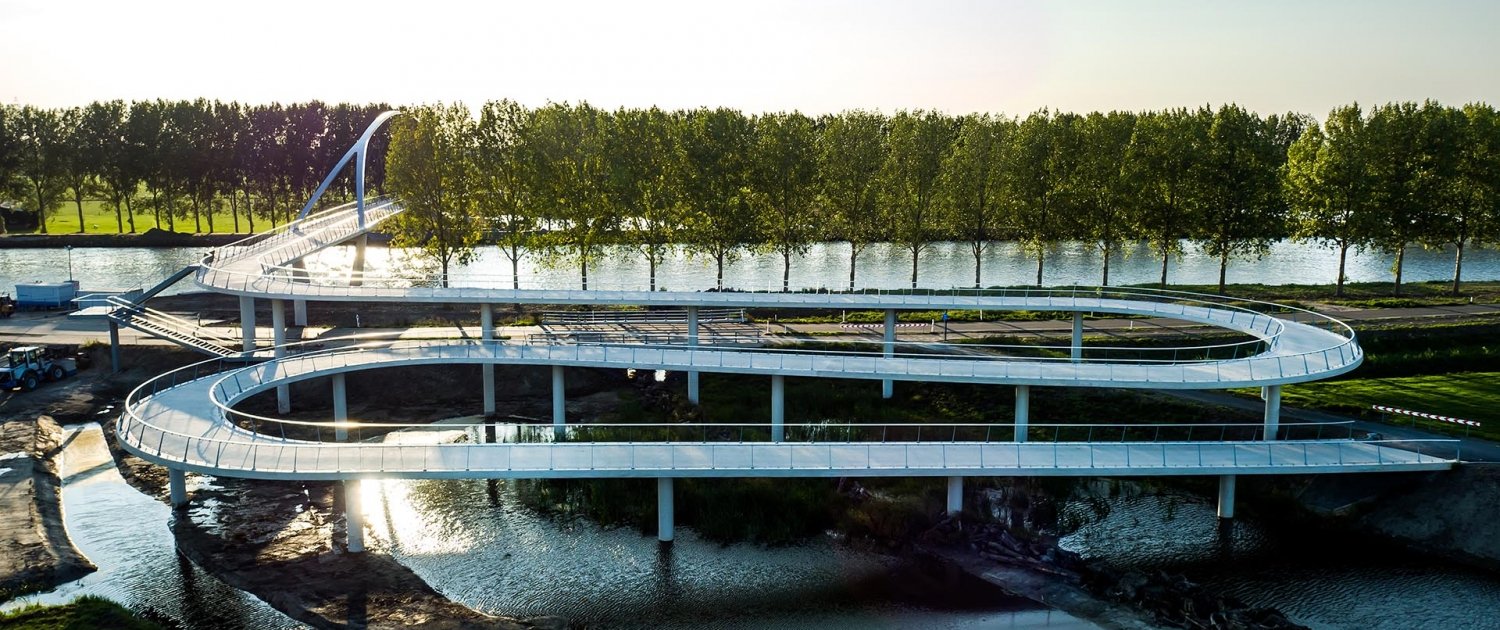basic guidelines
As bridges across waterways or roads often have requirements regarding their vertical clearance, they often are at a level significantly higher than ground level and therefore need slopes leading up the the bridge itself. The longer and steeper the ramp, the more difficult cyclists will find it to traverse. In this, the average grade of a slope plays a much larger role than its length. Ideally, the grade of a ramp or slope is anywhere between 1.75 % (minimum) and 7,5 % (maximum). However, each situation is different and requiers its own analysis.
setting the grade
Which grade is acceptable depends on many things, among which are avilable space, nearby alternatives, logic and budget. By looking at all the options, we can usually find a suitable solution. Sometimes even out-of-the-box ones, such as lowering the road underneath, as we did at the Hovenring bicycle bridge roundabout, or elevating the approach road.
design aspects
When we design a slope, we take many things into account. Safety for instance. Cyclists usually have a relatively high speed when they start their ascend, which means they are more ablto to cope with a short steep ramp right at the beginning. A steeper ramp at the bottom however does require extra attention to safety for cyclistst going downhill. Intersections, corners or any type of obstacle should be placed well away from the bottom of the ramp, allowing for plenty of room and titme for downhill cyclists to reduce their speed. For reasons of comfortability, a height difference of 3 meter or over requires a level landing somewhere along the route, allowing for cyclists to catch their breath and maintain or build up speed.
design manual
More extensive information on the design of bicycle slopes, can be found in our Brief Dutch Design Manual for Bicycle and Pedestrian Bridges, which can be downloaded free of charge via our website.
more information?

call Ivo Mulders:
+31 15 750 25 73




